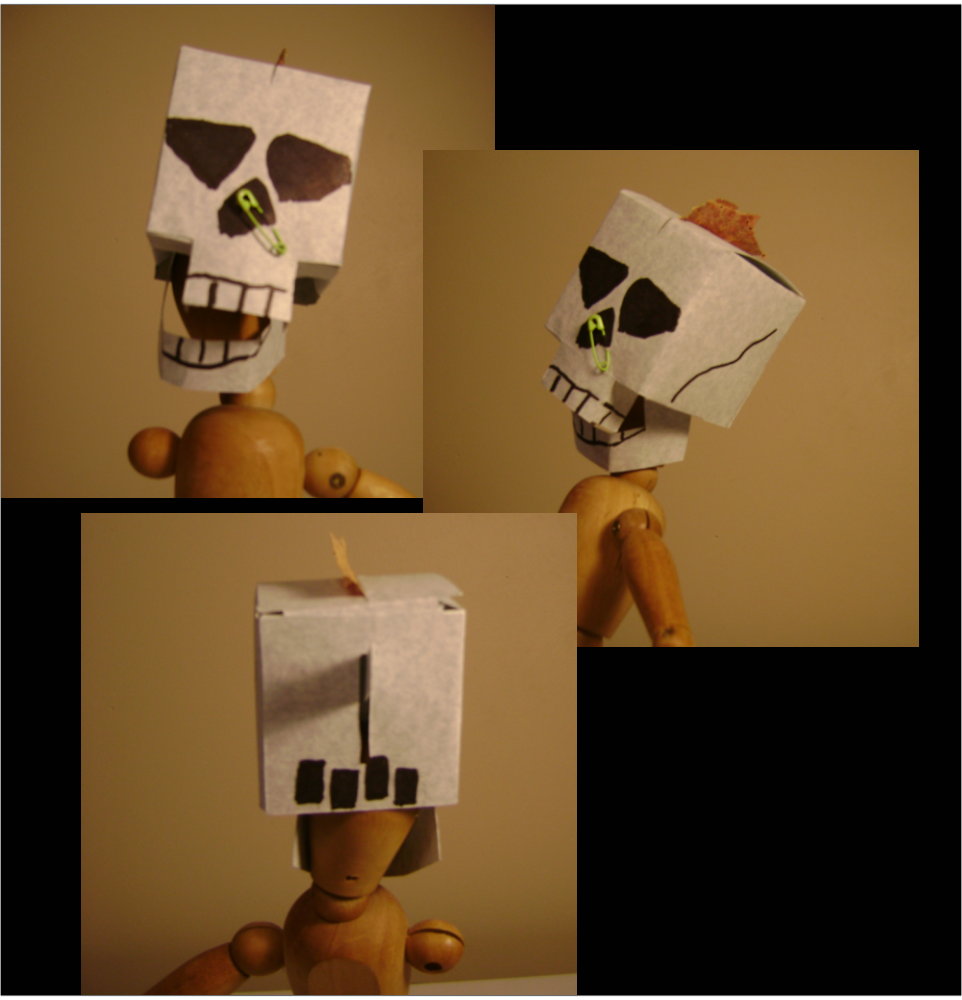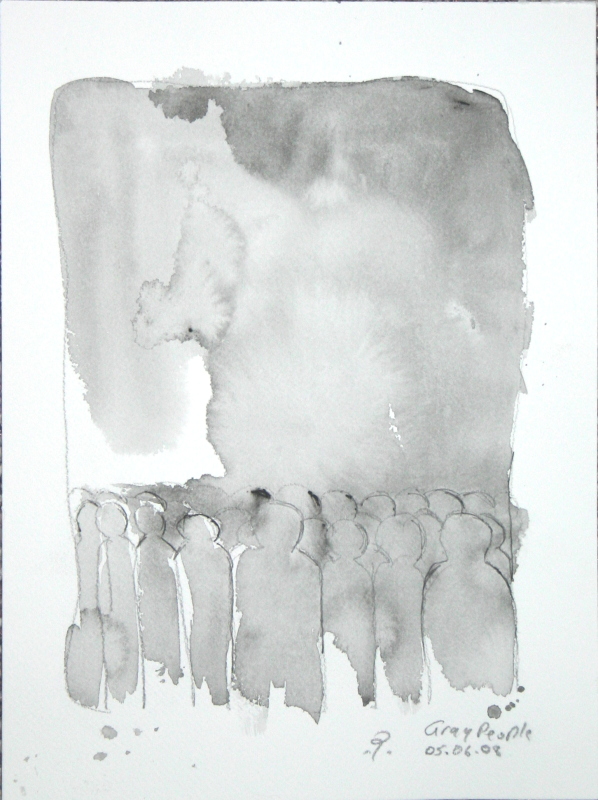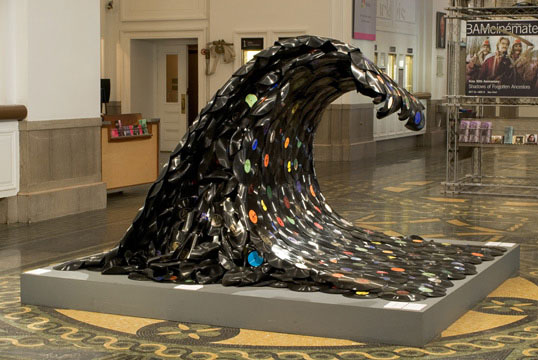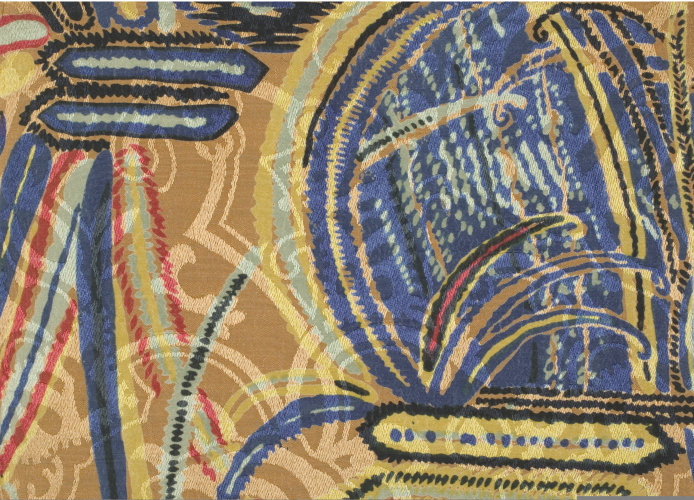I’ve finally posted some pics of my wreck this journal project after 6 months.
I’ve made some good progress, and am about half through the journal. Check out my Wreck this Journal Gallery
My Skulladay Contest entry
I entered the papercraft punk rocker skull in Skull-A-DayPapercraft skull contest.
You have until this coming Sunday Oct 5 to enter also, and win a copy of the Skull-A-Day book SKULLS!

Duet
I think I’ve finally beat this one into submission.

The color’s a little off in this pic, I ‘ll try to get a better one, when the light’s better.
New on Etsy

Just put this up on my Esty shop.
Jean Shin
Jean Shin turns trash into sculpture. Some amazing works, including the Sound Wave below, and others made of pill bottles, computer keyboard keys, etc.

Electronic Swatchbook
Need a pattern idea for something, a background for a scrapbook page or collage, or a webpage? Right here there’s thousands of them. All copyright free (in Australia–your mileage may vary, but it looks like most of them are old enough to be public domain, in the US, anyways). Here’s a couple of samples:


Via Susan Lomuto’s Daily Art Muse.
Aaar!!!!!!!!
Jesus F**king C***st!! Shiver me f**king timbers! Avast, ye f***ing landlu–
Whats that?
It’s talk like a pirate day? Not swear like a pirate day?
Never mind…
The New Studio
http://www.youtube.com/watch?v=iZwuX5mCs9Q&fmt=18
Advice for Emerging Artists
From Art Review – ‘How Soon Is Now?’ Exhibition at the Bronx Museum of the Arts – Review – NYTimes.com by Roberta Smith
“How Soon Is Now?” suggests that there is no point in spending time on “professional development” or learning how to advance one’s work in the marketplace if artistic development is not well under way. That requires lots of long, hard looking at all kinds of art, in all mediums, from all periods and cultures. Aspiring artists need to expose themselves to the sheer intensity and variety of art, to learn what they love, what they hate and if they are actually artists at all. New York’s galleries and especially its great museums offer ample opportunity for this kind of self-education, which leads to self-knowledge. Anything is possible when artists set to work knowing they have something they urgently need to say, in a way it hasn’t quite been said before
John Cage’s “Rules for Students and Teachers”
1. Find a place you trust, and then try trusting it for awhile.
2. General duties of a student–pull everything out of your teacher; pull everything out of your fellow students.
3. General duties of a teacher–pull everything out of your students.
4. Consider everything an experiment.
5. Be self-disciplined–this means finding someone wise or smart and choosing to follow them. To be disciplined is to follow in a good way. To be self-disciplined is to follow in a better way.
6. Nothing is a mistake. There’s no win and no fail, there’s only make.
7. The only rule is work. If you work it will lead to something. It’s the people who do all of the work all of the time who eventually catch on to things.
8. Don’t try to create and analyze at the same time. They’re different processes.
9. Be happy whenever you can manage it. Enjoy yourself. It’s lighter than you think.
10. Break rules. Even your own rules. Leave plenty of room for X quantities.